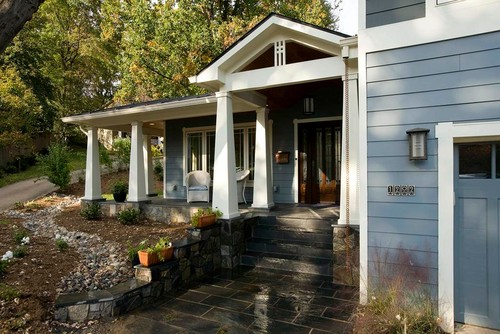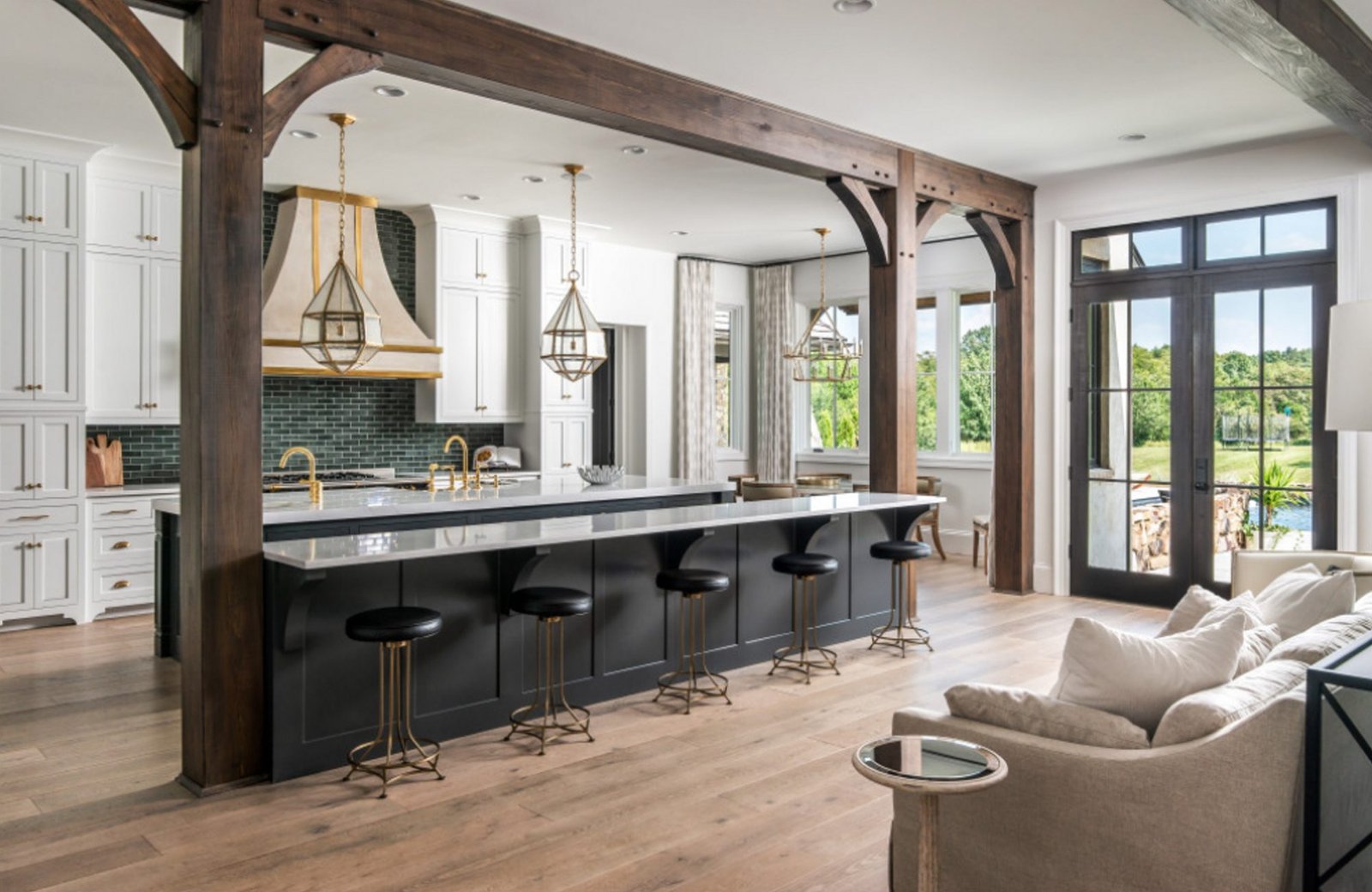What is Tyvek House Wrap? – It is a brand name for weather protector building wrap. In addition, Tyvek is a fire retardant material that is very strong and durable.
How it works? – It keeps moisture from penetrating house walls while also allowing the building to “breathe”, providing the best balance of weather protection, moisture management and durability
In fact, Tyvek is a barrier material that is used for wrapping houses. It is also used to make coverings for vehicles, envelopes and a variety of other consumer products manufactured by DuPont.

Photo by Michael Nash Design, Build & Homes – Search exterior home design ideas
What is Tyvek house wrap made of? – It is made from space age polymers, and allows moisture to escape, but resists water penetration from outside. This tough, durable and unique structure is not susceptible to the compromises of a perforated material. The fibrous structure is engineered to create millions of extremely small pores that resist bulk water and air penetration while allowing moisture vapour to pass through. That will avoid condensation build-up in the walls.
How it is used? – Tyvek wrap for houses comes in rolls of thin plastic-looking material and is used during construction and remodeling as a wind and moisture barrier. The house wrap is applied to bare outside walls before installing vinyl siding or other siding materials.
House wrap is usually not something that gets much thought when planning a new home, but it should. Luckily, installing Tyvek house wrap is a fairly easy task that anyone can complete. Anyhow you need someone to help unroll and attach the house wrap to make the task easier.
How to Frame Your House or Rough Carpentry (howtobuildahouseblog.com)
Usually Mistakes:
- For some reason, builders often think they can get away without wrapping the gable ends. They’re thinking of the wrap only as an air infiltration barrier but not as a weather barrier. Driving rain gets behind the siding, runs down the sheathing, and winds up behind the house wrap.
- Many builders don’t rap the Tyvek around the edges of the windows and doors to the inside of the frame and nail the tyvek to the inside. Follow manufacturer instructions because sealing your home properly using house wrap may seem to be a minor thing but every little bit helps.
- Often house wrap doesn’t quite make it around the corners. Like gables, corners get a lot of weather exposure, and any water that enters at this intersection of trim and siding then has direct access to the structure.
- Band joists. Sometimes walls are sheathed and wrapped while they’re lying on the deck. Then, when the wall is lifted, the band or mud sill remains unprotected. If you install wrap this way, make sure you go back and cover the band joist with a strip of house wrap, tucking it under the wrap above.
House wrap is gaining in popularity because of the race to build more energy-efficient homes and Tyvek house wrap is widely used by builders in North America.
Building wrap promotes more energy efficiency by permitting moisture, but not wind, to pass through its material. If the seams are well sealed, the effect can be dramatic.


